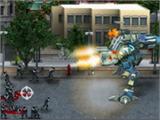Lichuan City, Hubei Agriculture Science and Technology Benefits the People Jin Tou Centipede Breeding? Hubei Agriculture Science and Technology Benefits the People Centipede Breeding was established in 201... (Note: The sentence seems incomplete, so the translation also ends where the original text does.)
Hubei Agri-science People Benefit Golden-headed Centipede Breeding? Hubei Agri-science People Benefit Centipede Breeding is the best breeding project in 2011.
The centipede, also known as Tianlong, hundred-foot insect, and less spiny centipede, etc. Common centipedes come in three types: red head, green head, and black head. The red-headed centipede has a back that is reddish-black, an abdomen that appears light red, and legs that are light orange-red or yellow. The green-headed centipede has a blue back and legs, with a light blue abdomen, smaller in size, about half the length of the red-headed centipede. The black-headed centipede has a black back and legs, with a pale yellow abdomen, even smaller in size. Among these three types, the red-headed centipede is the best, larger in size, higher in yield, gentle in nature, strong in adaptability, fast-growing, and suitable for artificial breeding.
I) Temperature required for breeding centipedes:
The appropriate temperature for centipede growth and reproduction is 20℃-32℃. Below 10℃, their activity slows down, they have less movement and eat less. Below 5℃, they enter hibernation.
II) The relative humidity of the air in the breeding den is generally around 70%, while the humidity of the bedding soil in the den is 30% to 35%.
III) Density of centipede breeding:
Generally, about 600 adult centipedes are placed per square meter, around 1800 medium-sized centipedes, and approximately 3000 small centipedes. Centipedes of different sizes must be bred separately to prevent the strong bullying the weak, the large bullying the small, and mutual killing.
IV) Feeding time for centipedes:
Feeding usually begins around 6 PM, as centipedes are active at night and rest during the day. They come out at night to feed between 9 PM and 3 AM. Food is provided every two days, and it must be sufficient to avoid fights over food shortages leading to cannibalism. Although centipedes have a wide range of food sources, they require fresh food and do not eat rotten food. A single feeding can reach one-fifth to three-fifths of their body weight. After eating until full, they can survive without food for ten to fifteen days.
V) How to supply water to centipedes:
Centipedes have the ability to endure hunger and can survive without food for one to two months. However, they cannot live without water. Centipedes have a relatively high demand for water, especially in hot weather when water should be supplied promptly. This can be done by wetting corn cobs or sponges and placing them on bricks or tiles inside the den, soaking clean cloth strips in water and placing them on bricks or tiles, or using water drinking equipment. If using water drinking equipment, care must be taken to prevent centipedes from falling into it; small stones can be placed inside the equipment to keep the water level balanced. Water must be changed regularly to ensure its freshness.
VI) What are the feeds for centipedes:
Centipedes prefer fresh animal-based feeds, primarily soft-bodied, juicy small insects such as crickets, Tenebrio molitor, locusts, spiders, mole crickets, grasshoppers, earthworms, flies, maggots, sparrows, rodents, frogs, and other carnivorous animals, as well as pig blood, chicken blood, tender grass shoots, watermelon rinds, etc.
Hubei Agri-science People Benefit Golden-headed Centipede Breeding? Hubei Agri-science People Benefit Centipede Breeding is the best breeding project in 2011.
Official website for Hubei Agri-science People Benefit Centipede Breeding: http://hm9188.com/index1.asp
Consultation telephone: 027-87672386 87672385, Teacher Yu, QQ Online: 1582684012
Address: Room 318, Tianhui Building, Huazhong Agricultural University, Wuchang District, Wuhan City



